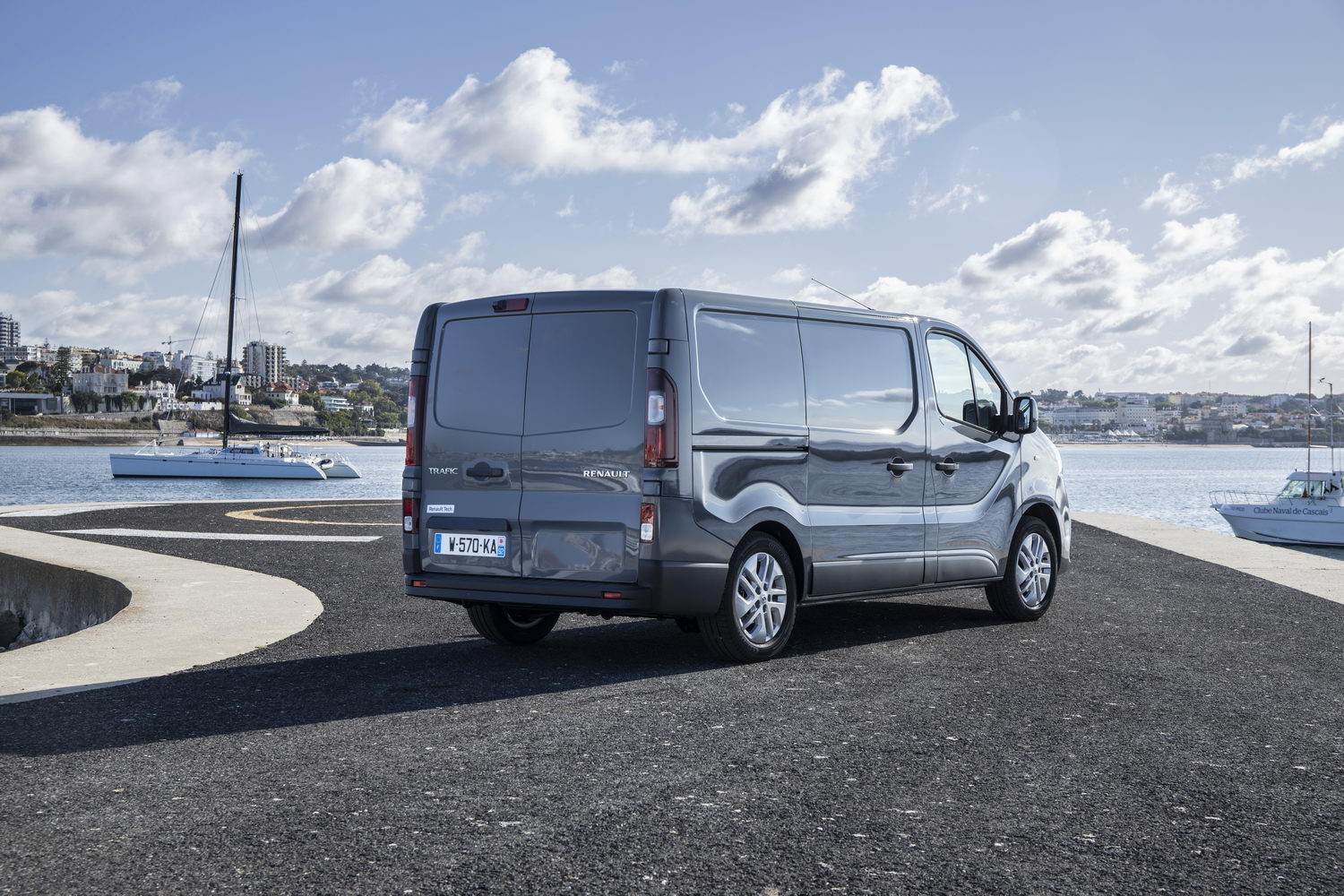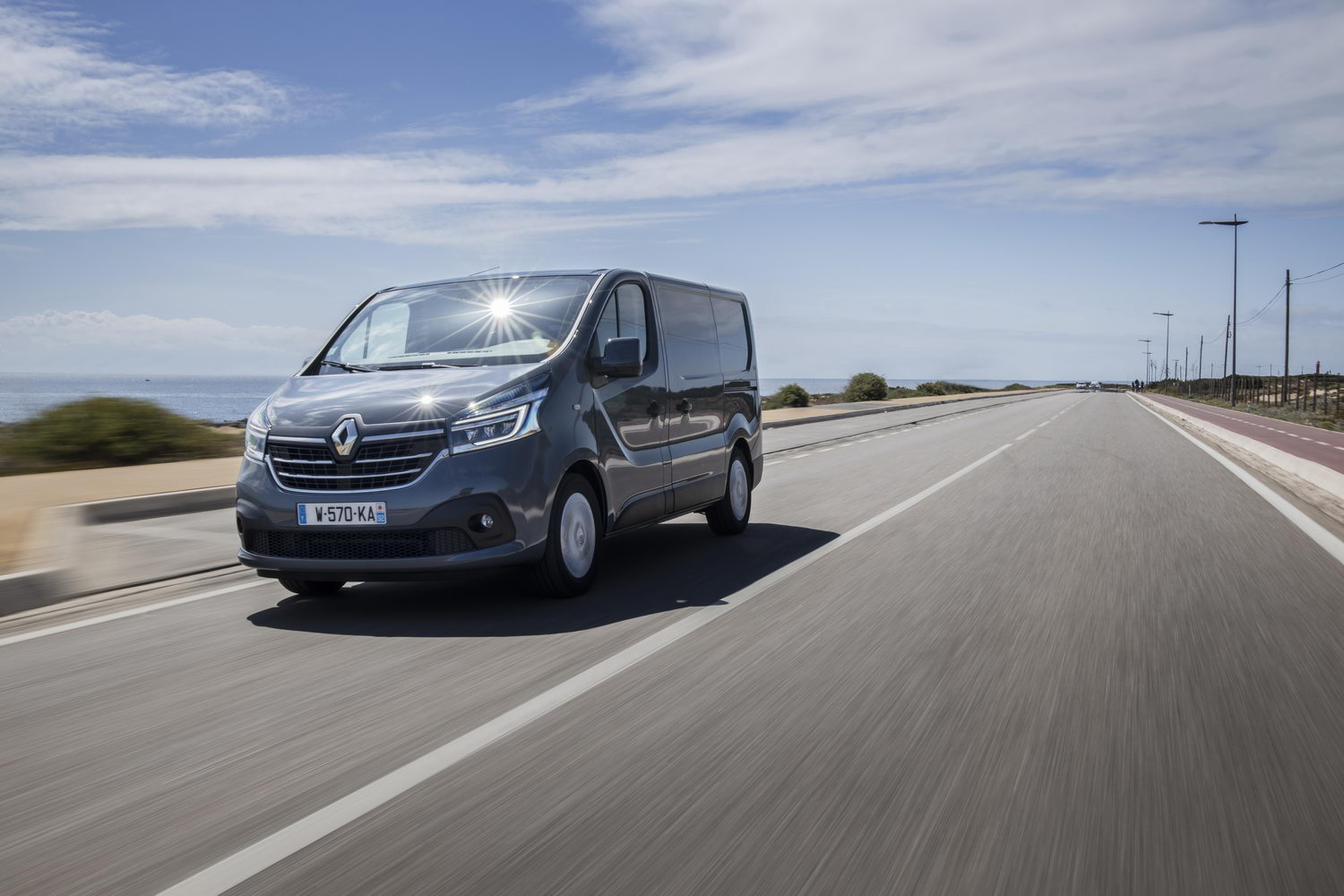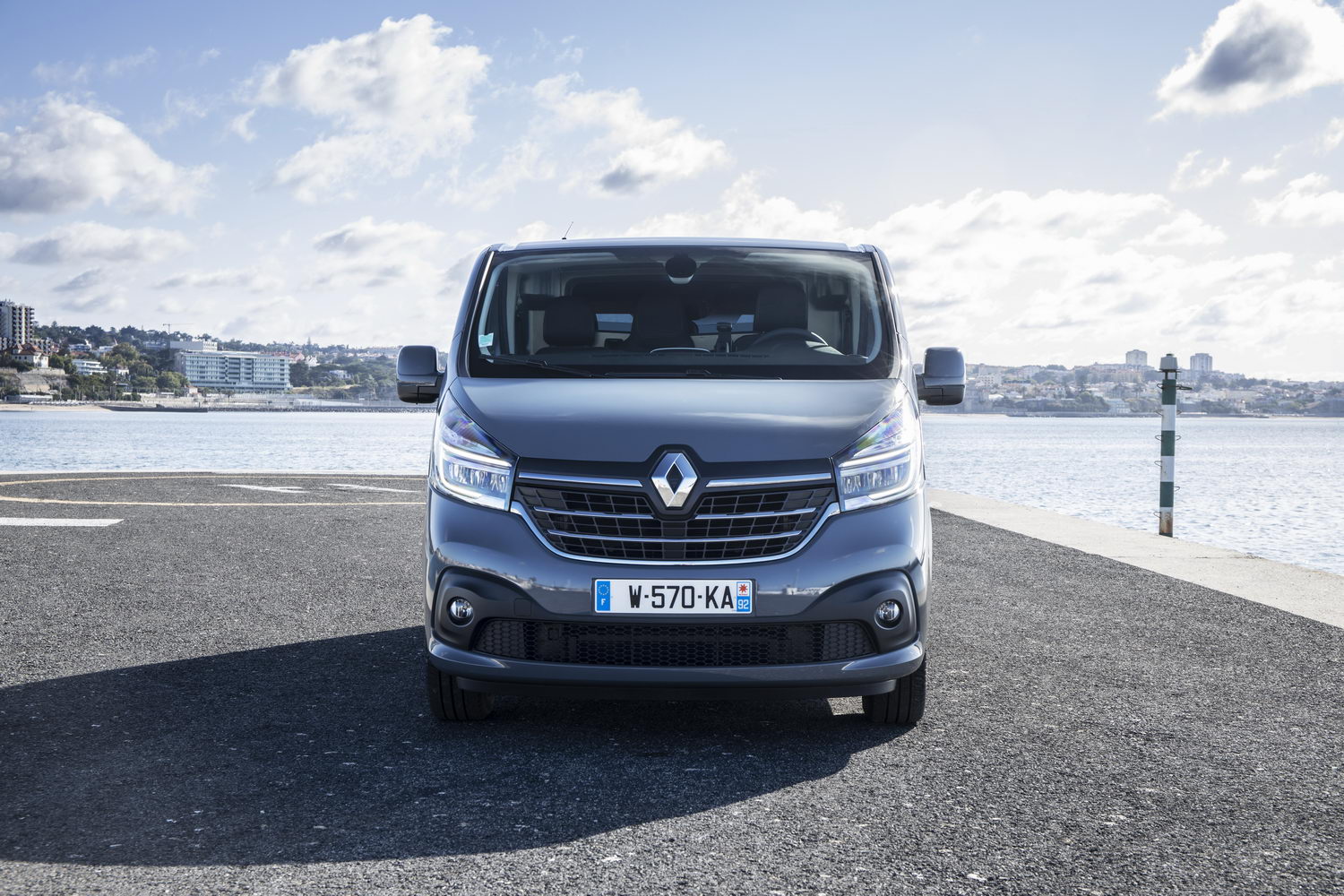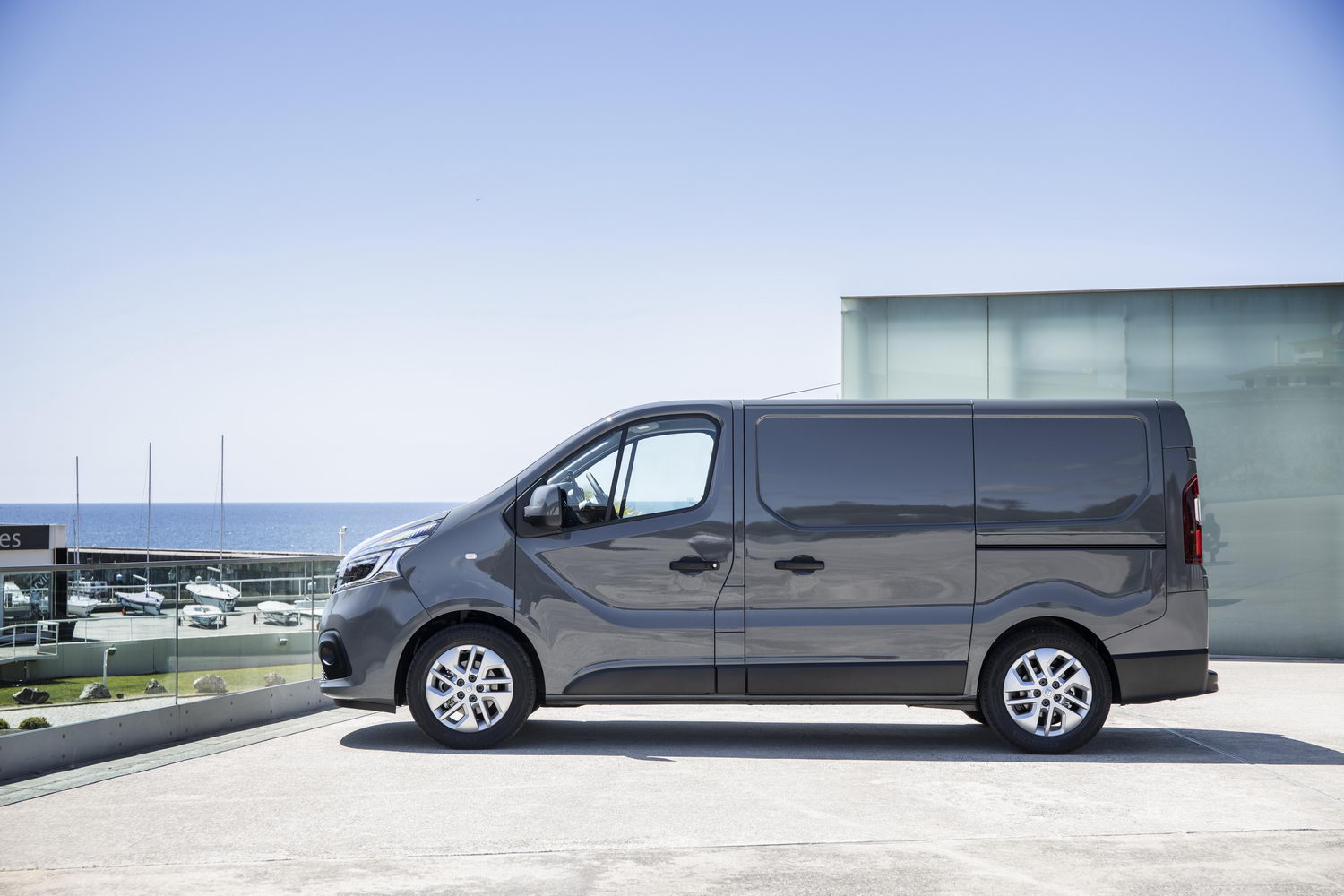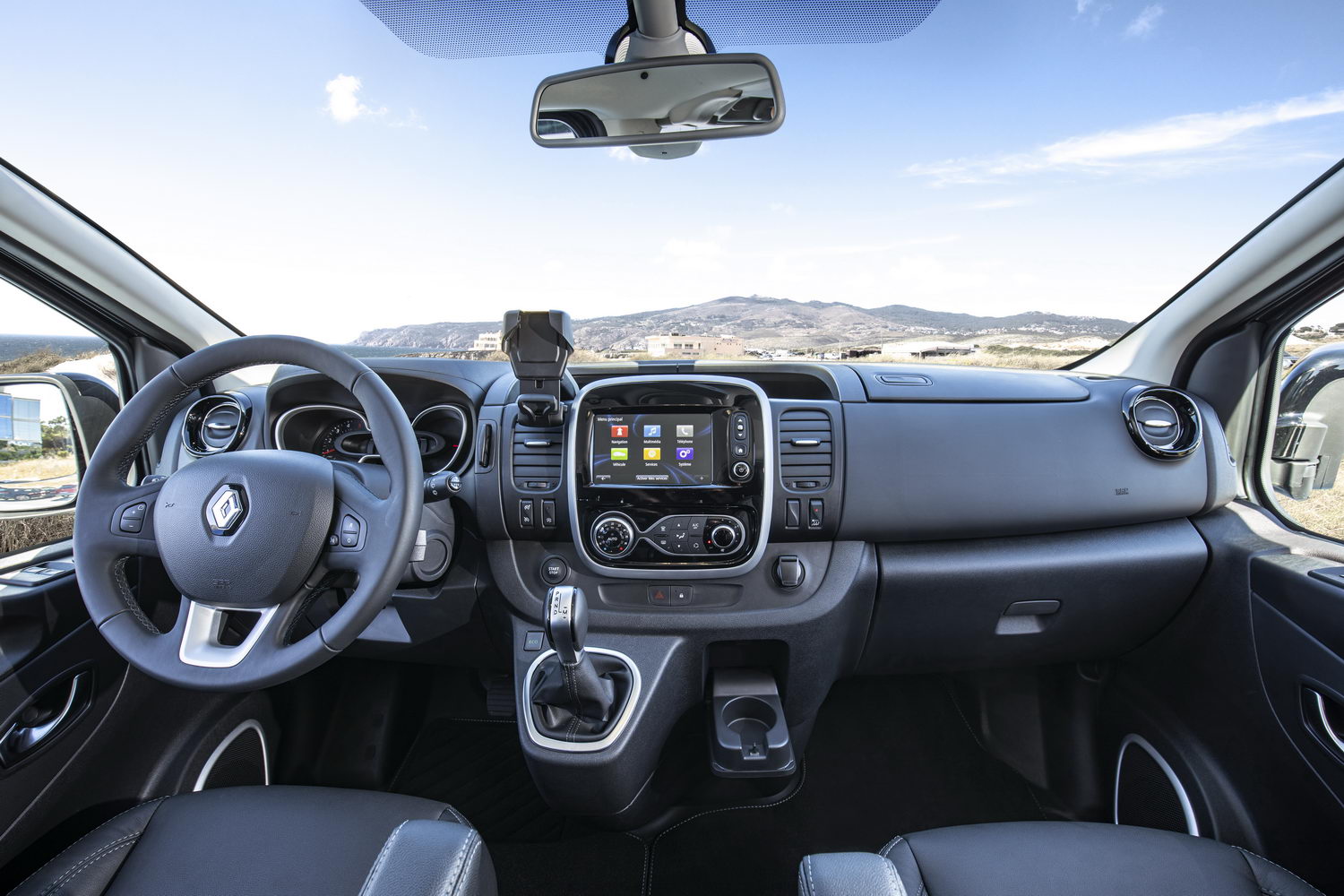Renault Trafic overview
The medium-sized panel van class is a hard-fought battleground, but the Renault Trafic is a strong contender. It has been around in its current guise since 2014, but constant updates mean it’s still a competitive van. The most recent update in 2019 introduced a smarter look, while the latest engine range is comprised solely of 2.0-litre dCi diesels that balance performance and fuel efficiency well.
There are a variety of body styles available for the Renault Trafic. The panel van comes in two lengths and two roof heights, so there are four styles to choose from, and there’s also a six-seat Crew Van. All vans come with a single sliding side door - although the Crew Van has twin sliding doors – and symmetrical twin doors at the back that open to 180 degrees, although there is the option to add 270-degree opening to L2 models.
The 2.0 dCi diesel replaces the older 1.6 dCi that came with single or twin turbos. The 2.0 dCi engine is a single-turbo unit that’s designed to meet the latest emissions legislation, but it means that even the entry level engine has decent mid-range pulling power. There are 120, 145 and 170 versions of the engine, all of which come with a six-speed manual gearbox as standard. In addition, a six-speed twin-clutch auto is available with the two larger engines, while all versions of the Trafic are front-wheel drive. Renault’s Grip Xtend system adds a switchable traction control system that helps the Trafic in slippery conditions.
Renault Trafic range
There are three trims in the Trafic line-up - Business, Business+ and Sport. Standard equipment includes heated door mirrors, steel wheels with plastic trims, a full steel bulkhead, electric windows, Bluetooth, USB and 12v connections, trip computer and a reach and rake adjustable steering wheel. Go for Business+, and you get air conditioning, a load-through bulkhead, rear parking sensors and extra storage.
The Sport model is a bit of a misnomer because it’s not really that sporty. But you do get alloy wheels and extra body-coloured exterior trim, touchscreen navigation, auto lights and wipers, even more storage and cruise control with a speed limiter. Unlike some rivals - and mainly because of the Trafic’s age - some of the more advanced safety equipment isn’t available. Even a passenger airbag is optional, while kit such as autonomous emergency braking, adaptive cruise or blind spot monitoring isn’t offered. You can get navigation with Apple CarPlay and Android Auto, though.
Renault Trafic interior
The Trafic’s cab is one of the more spacious offerings in the medium-sized van class. There’s plenty of shoulder room for three, while the tall driving position and wide-angle door mirrors offer a great view of your surroundings. One neat addition is a ‘wide-view’ mirror on the passenger sun visor that helps reduce the blind spot on the nearside. A reach and rake-adjustable steering wheel means it’s easy to find a comfortable driving position, too. There’s lots of storage, with a decent glovebox, dashtop cubbies and deep two-level door bins, while higher spec vans have under-seat storage (although this is out of action if you use the through loading facility), a handy smartphone cradle and a middle seat back that folds down to create a table.
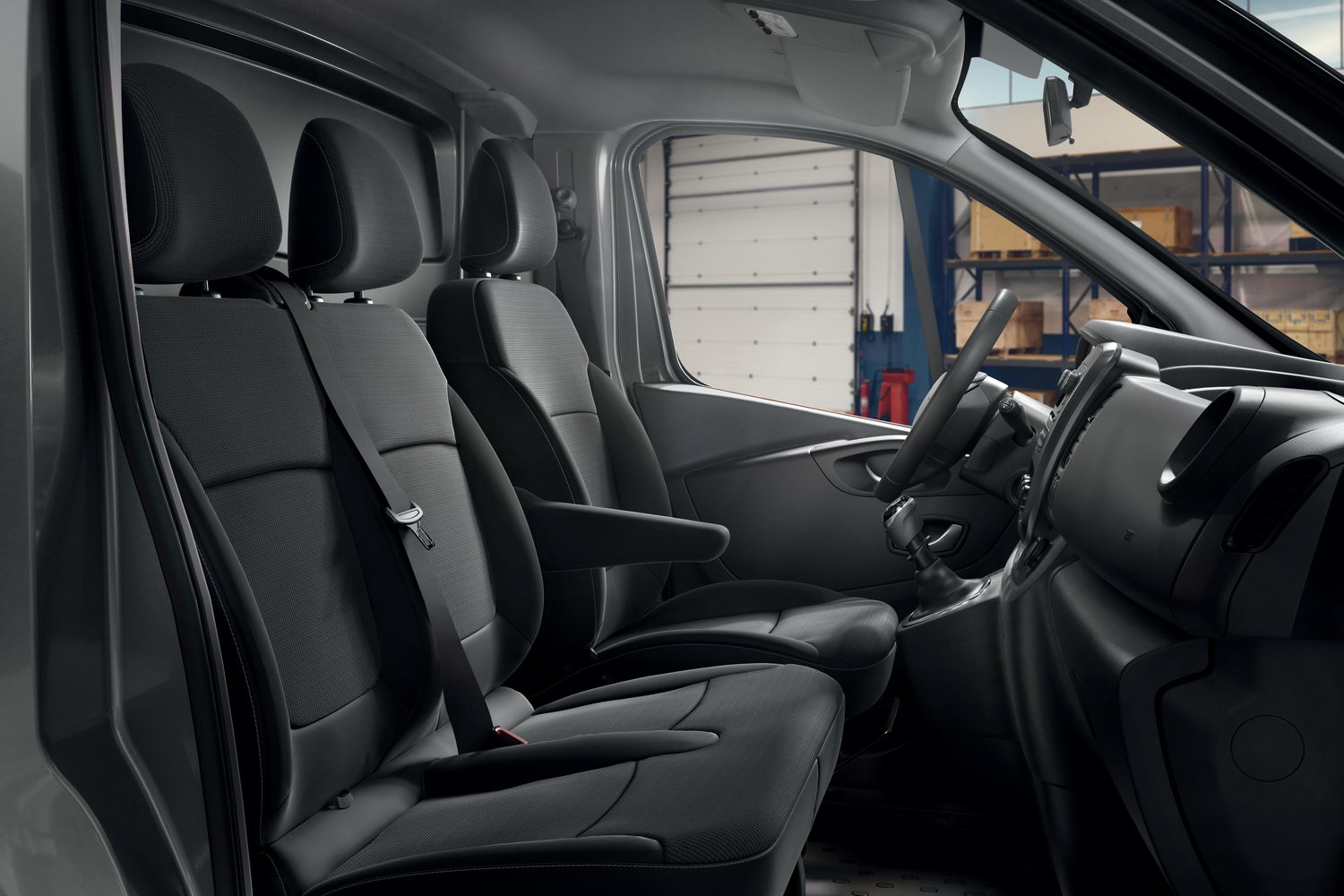
In the back, the cargo area is tall and square, so offers lots of good storage, plus there are lashing eyes set into the floor. Higher-spec vans with the through-loading bulkhead can only take long, thin items such as ladders, planks or pipes, because the hole in the bulkhead is only big enough for items to stow under the passenger seats.
The Crew Van has two rows of three seats, but like the standard van, shoulder room is good. There’s a steel bulkhead, but no through loading option, while the side doors are glazed, plus there’s a window in the bulkhead, but not for the rear doors.
Renault Trafic driving experience
A tall driving position means the Renault Trafic is easy to place on the road, and the clear view of the road ahead gives you plenty of warning about hazards. The position of the driver’s seat means you can rest your elbow on the driver’s door easily, while the single armrest on the other side helps with comfort, too.
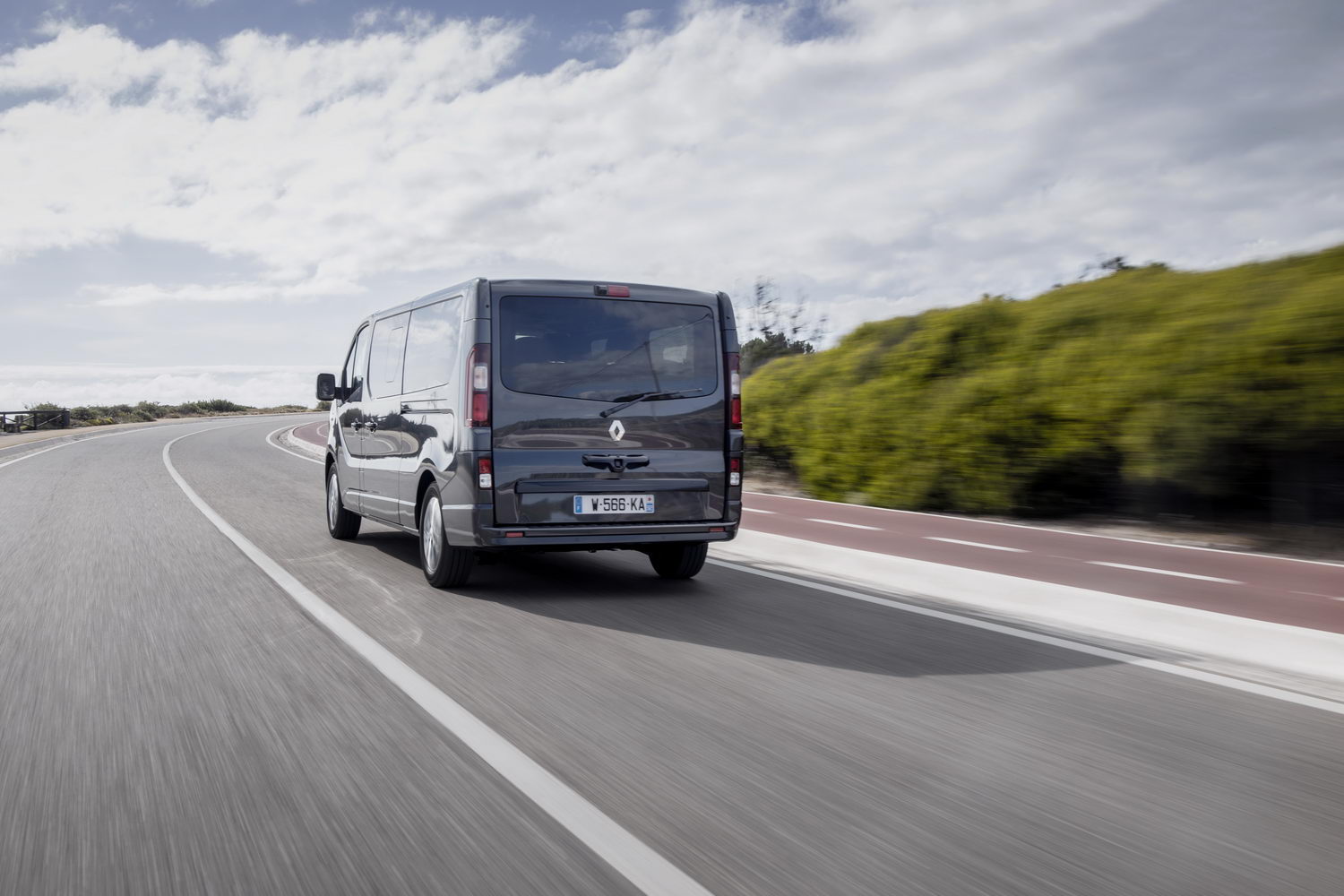
The 2.0 dCi diesels are strong performers, whichever power output you go for. The large capacity means even the 120hp diesel has 320Nm of torque, so choosing the smallest engine is no hardship and the Trafic doesn’t struggle with a full payload on board. The standard six-speed manual has Renault’s typically rubbery shift, but it doesn’t baulk once you’re used to it. The auto is reasonable, but is a bit slower to shift than some other gearboxes. Having six gears means motorway driving is refined, and the Trafic is a settled cruiser. It’s no sports car in corners, and that tall driving position emphasises body lean, while the tyres are geared towards efficiency over grip, but then vans like these aren’t really designed to be hustled over twisty roads.
Renault Trafic alternatives
The Renault’s chief rival is the Ford Transit Custom. It’s slightly larger inside than the Trafic, it has a more upmarket interior, the engine range has more variety, with a wider range of power outputs (including mild hybrid diesel and plug-in hybrid petrol options), while some models feature rugged off-road styling or sporty looks. Elsewhere, the Opel Vivaro used to be a rebadged Trafic, but with Opel now part of the Stellantis group, the current Vivaro now has running gear in common with the Citroen Dispatch, Peugeot Expert and Toyota Proace. All of those vans are slightly smaller than the Trafic - both for cabin space and cargo carrying - but do offer a more car-like driving experience. They are also available with electric drive.
One van that does share tech with the Trafic is the Nissan NV300 (it’s built in the same factory in France), while the Fiat Talento has the same body, but uses Fiat’s own engines. Again, now that Fiat is part of Stellantis, expect the Talento to be replaced by a van that shares tech with Citroen, Opel, Peugeot and Toyota. The Mercedes Vito and Volkswagen T6 Transporter both offer a more upmarket alternative to the Trafic, but can get expensive. The former is available with rear-wheel drive, while both offer the option of electric drive.
Renault Trafic summary
It’s been around for a bit longer than some rivals, but the Renault Trafic is a great choice for a no-nonsense medium-sized panel van. The variety of bodies is greater than most rivals, while the range of 2.0 dCi diesels deliver strong performance without compromising efficiency. That large, uniform cargo area is well shaped for most loads, and the spacious cab offers a clear view of the road and good comfort.
